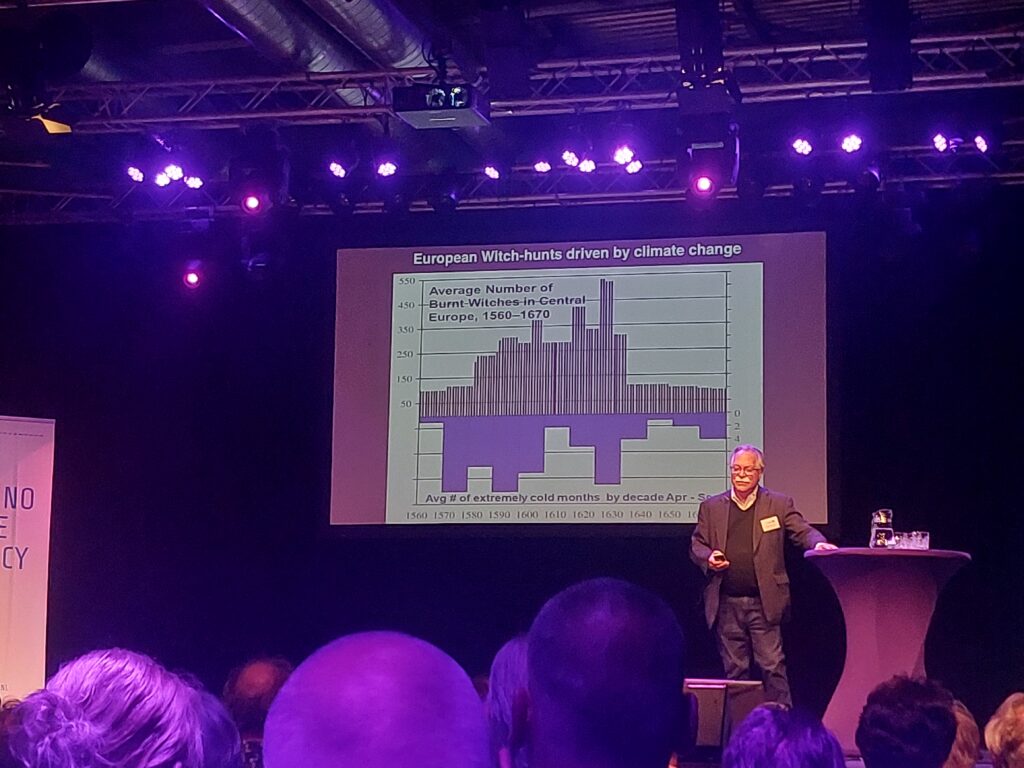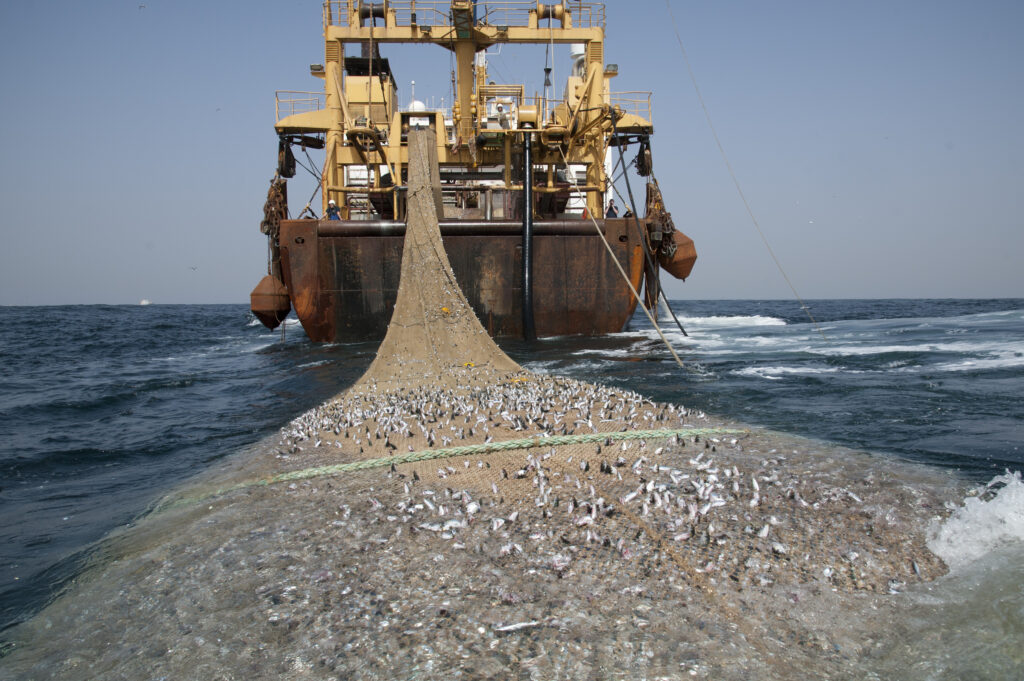Yesterday, treesitters from Climate Ground Zero ended a nine day occupation of the Massey Energy owned Bee Tree mine site in southern West Virginia. On Thursday, after an emergency meeting with Governor Joe Manchin, the Raleigh County prosecution office intervened to impose a moratorium on the use of noise horns that Massey was using to deprive the treesitters of sleep.
The treesit represents Climate Ground Zero’s most sustained intervention in mountaintop removal mining operations since its campaign of nonviolent direct action began last February. In a final communication from her treesit perch, Amber Nitchman, 19, captured the group’s resolve, saying “It’s not over until the blasting is stopped.”
The protest began on the same day as the debate we liveblogged last week between Massey Energy CEO Don Blankenship and Robert F. Kennedy, Jr. From Blankenship’s comments at that debate, it isn’t difficult to understand why activists are targeting Massey Energy. With encouragement from environmental leaders like James Hansen and Al Gore who label the coal fields a front line in the fight to curb climate change, a continued escalation of protest activities in West Virginia seems likely.
In the debate, Blankenship noted that arguments backed by “emotional appeals are typical of the environmental movement.” Blankenship, for his part, continuously equates environmental regulations to an effort to ship jobs to India and China (but don’t think that stops Massey from doing business in India). What makes Blankenship an effective spokesperson for his views is that he employs his own emotional appeals quite eloquently, and then piggybacks them with the use of industry-sourced or funded statistics that are misleading or false.
Journalists on deadlines limit their coverage to capturing the opposing soundbites of the controversy. Kennedy pointed out that journalists also have an obligation to discern the truth, but the obstacle here seems to be that they are poorly versed in the scientific literature that would equip them to challenge those emotional appeals which are backed by misleading statistics. As a follow-up to our debate coverage and in light of the unfolding events in the coal fields, today we take a closer look at three of Blankenship’s more spurious claims.
Blankenship on mercury: “I don’t know where all this comes from about mercury killing everything. 1% of mercury in this country is from coal fired power plants, 99% is from somewhere else. You can get anything you want from the internet, you can get anything you want if you pay for it in a study.”
Throughout the debate, Blankenship challenged Kennedy’s assertion that coal-fired power plants are a large source of industrial mercury pollution. In their 1997 Report to Congress, the EPA looked at a range of peer-reviewed studies and concluded that 32.8% of US mercury emissions came from coal-fired power plants (an updated 1999 EPA inventory increased the percentage to >40%). At the time, it was recognized that this proportion would increase, since regulation of other major sources of industrial mercury pollution had already begun (most notably on municipal waste incinerators, which have reduced their own mercury emissions by 90% in recent years).
If the EPA attributed 32.8% of mercury emissions to coal-fired power plants in 1997, a number that several environmental groups thought was conservative, how does Blankenship arrive at 1%? The number shows up in a report entitled, ‘Reality Check: Straight Talk About MERCURY,’ which was produced by the US Chamber of Commerce, where Blankenship is a member of the board and who are also known for their controversial stances against climate change legislation.
The Chamber arrives at 1% by adding in natural sources of mercury and by measuring US coal-fired plant sources against the entire sum of global sources. Adding in natural sources is particularly disingenuous. While it’s true that volcanoes, geologic deposits and oceans do account for around 50% of the mercury which lands in the US, this mercury is naturally cycling through the atmosphere, land, and ocean, a process which takes around 3,000 years. Burning coal takes mercury out of its natural stores and overwhelms the cycling process. An MIT review study notes that this has increased mercury in the natural cycle by a factor of 3 to 5. More mercury in the atmosphere and oceans means that more bioaccumulates in the fish we eat (a 2009 study found mercury in every fish tested), which means more neurological and developmental risks for our offspring.
Further, Blankenship and the Chamber cite a single University of Rochester population study of the Seychelles Islands to make a claim that the science surrounding mercury’s health effects is unresolved or in doubt. The National Academy of Science, in a review requested by the EPA of all available population studies, concluded that the Seychelles study was an anomaly, and government departments from around the world have felt certain enough to issue health warnings about the consumption of fish and exposure to mercury.
On a folksier note, Blankenship made a claim that people in Japan and India eat a lot of fish, and noted that they seem to be doing ok. If he actually means to suggest that mercury consumption is safe, we suggest that a suitable nickname for Blankenship may be The Mad Hatter.
The Chamber report demonstrates that Blankenship is right about one thing: you can find any number you want on the internet and pay for any result you want in a study.
Blankenship on coal slurry impoundments (paraphrased quote): “The impoundment that gets the most attention in this state gets it because it is above an elementary school, but people fail to mention that this school has been there since I was in grade school.”
Blankenship is referring to the locally famous Shumate Creek Slurry Impoundment in Sundial, West Virginia, which holds approximately 2.8 billion gallons of toxic coal byproducts behind a 385 foot tall dam. The dam sits directly above Marshfork Elementary School, which also sits approximately 300 yards from a coal processing facility. In 2005, Ed Wiley, a retired coal mining contractor whose granddaughter was a student at the school, walked from West Virginia to Washington, DC to protest the processing facility’s attempt to build a second silo despite evidence that around 91% of the students suffered from asthma or other respiratory problems.
Blasting on a mountaintop removal site above the impoundment continues despite a history of safety violations at the dam. A similar dam in Buffalo Creek, West Virginia failed in 1972, killing 125 people under 132 million gallons of sludge. Across West Virginia, over 100 of these impoundments exist; one is taller than the Hoover Dam.
As Ed Wiley told me after the event, “If that dam has been there since Don Blankenship was in grammar school, he must have failed several years of school, since that site was built in the 80’s.”
See the permit here, which shows that construction began in 1985. The school was built in the 1930s. Attempts to contact Massey representatives for clarification were not returned.
Blankenship on Climate Change: “What’s been missed in this country, even under the Bush administration, is that we’ve made our boilers, and our refrigerators, and our air conditioners so efficient that we actually reduced carbon emissions. The US industries since 1990 may be the only industry in the world that complied with the Kyoto agreement, but its been for a bad reason because its meant a lot of lost jobs and transferred a lot of industry overseas.”
The quote is transcribed directly, and it’s unclear what is meant by his statement that US industries since 1990 have complied with Kyoto. Follow-up emails to Blankenship’s press team were not returned. Plainly, this is just not true.
*Photo credit: Climate Ground Zero
Subscribe to our newsletter
Stay up to date with DeSmog news and alerts







